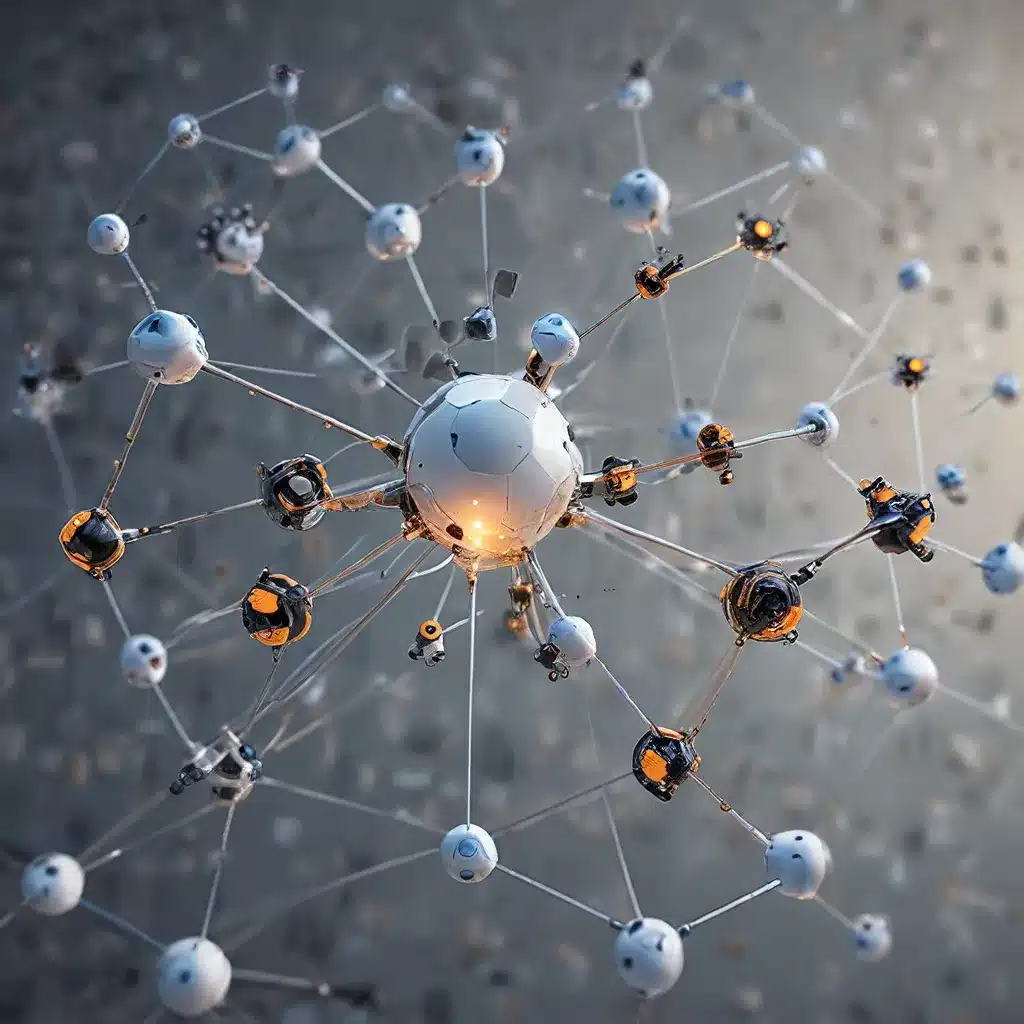
The Rise of Sensor Networks and the IoT Revolution
The Internet of Things (IoT) has revolutionized the way we interact with the world around us. At the heart of this transformation lies the sensor network, a technological marvel that enables the seamless and ubiquitous collection of data from our environment. These sensor networks, once considered the domain of specialized applications, have now become integral to a wide range of industries, from smart cities and precision agriculture to healthcare and industrial automation.
As the IoT ecosystem continues to evolve, the need for collaborative algorithms that can effectively harness the power of sensor networks has become increasingly evident. Sensor swarm intelligence, a concept inspired by the collective behavior of natural swarms, offers a promising solution to this challenge. By leveraging the collective decision-making capabilities of interconnected sensors, sensor swarm intelligence can optimize resource utilization, enhance resilience, and drive transformative IoT applications.
Sensor Network Design: Collaborative Approaches
Designing effective sensor networks requires a delicate balance between various factors, including network topology, energy management, and security considerations. Traditionally, sensor networks have been designed with a centralized architecture, where a base station or gateway serves as the primary decision-making and data processing hub. However, this approach can lead to bottlenecks and single points of failure, limiting the scalability and resilience of the network.
Recent research has explored the potential of decentralized and distributed sensor network architectures, which leverage collaborative algorithms to enable swarm intelligence. In these models, sensors work together to make decisions, share data, and optimize network performance without relying on a central authority. This approach can enhance fault tolerance, energy efficiency, and data processing capabilities, paving the way for more scalable and resilient IoT deployments.
Collaborative Algorithms for Sensor Swarm Intelligence
The core of sensor swarm intelligence lies in the collaborative algorithms that enable sensors to work together effectively. These algorithms draw inspiration from the behavior of natural swarms, such as ant colonies and flocks of birds, where individuals within the swarm work together to achieve a common goal.
One of the key principles underlying collaborative algorithms in sensor networks is distributed decision-making. Instead of a centralized authority dictating the actions of the sensors, each sensor node is empowered to make autonomous decisions based on local information and shared knowledge within the swarm. This approach fosters adaptability and resilience, as the network can respond to dynamic environmental conditions and unexpected events without a single point of failure.
Swarm intelligence algorithms, such as ant colony optimization and particle swarm optimization, have been successfully applied to sensor networks to tackle challenges like routing, task allocation, and energy management. These algorithms leverage the collective intelligence of the sensor swarm to optimize network performance, reduce energy consumption, and enhance overall system resilience.
Securing Sensor Swarm Intelligence
As sensor networks and IoT applications become increasingly ubiquitous, the need for robust security measures has become paramount. Sensor swarm intelligence, with its decentralized and collaborative nature, presents both opportunities and challenges in terms of cybersecurity.
On the one hand, the distributed decision-making inherent in sensor swarm intelligence can enhance resilience against cyber attacks, as the network can adapt and self-heal without a single point of failure. However, the complexity of these collaborative algorithms and the large number of interconnected sensor nodes can also increase the attack surface and introduce new vulnerabilities.
Securing sensor swarm intelligence requires a multi-layered approach, incorporating encryption, authentication, and anomaly detection mechanisms. Blockchain technology and edge computing have emerged as promising solutions, enabling decentralized security frameworks and real-time threat detection within the sensor network.
Transformative IoT Applications of Sensor Swarm Intelligence
The collaborative capabilities of sensor swarm intelligence have the potential to unlock a wide range of transformative IoT applications across various industries. From smart cities and precision agriculture to industrial automation and environmental monitoring, sensor swarm intelligence can drive optimized resource utilization, enhanced situational awareness, and improved decision-making.
In smart cities, sensor swarms can coordinate traffic management, energy distribution, and waste management systems, leading to improved efficiency and reduced environmental impact. In precision agriculture, sensor swarms can monitor crop health, soil conditions, and environmental factors, enabling data-driven decision-making and targeted resource allocation.
Sensor-Networks.org is a leading resource for professionals, researchers, and enthusiasts in the field of sensor networks and IoT, providing insights, case studies, and the latest advancements in the industry.
Towards a Sustainable and Resilient IoT Ecosystem
As the world embraces the transformative potential of the IoT, the role of sensor swarm intelligence in shaping this future cannot be overstated. By harnessing the collective power of interconnected sensor networks, collaborative algorithms can optimize resource utilization, enhance system resilience, and drive innovative IoT applications that positively impact our lives and the environment.
The journey towards a sustainable and resilient IoT ecosystem requires a holistic approach that addresses the technical, security, and societal implications of sensor swarm intelligence. Through continued research, industry collaboration, and public-private partnerships, the full potential of this transformative technology can be realized, paving the way for a more connected, efficient, and responsive world.